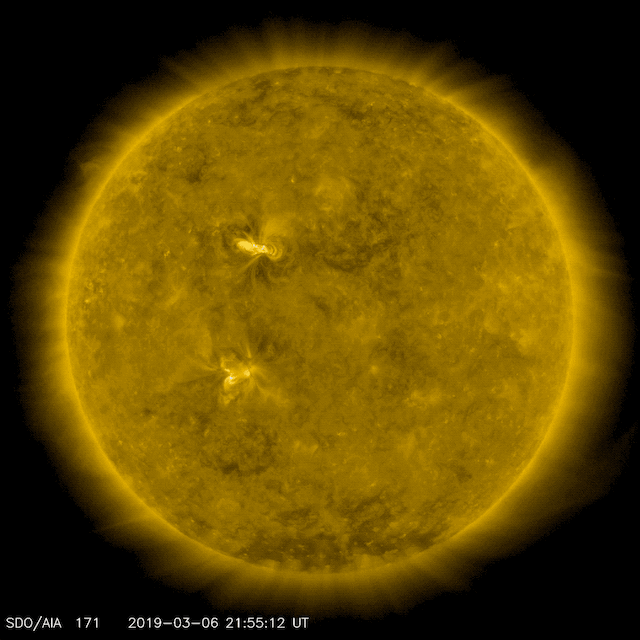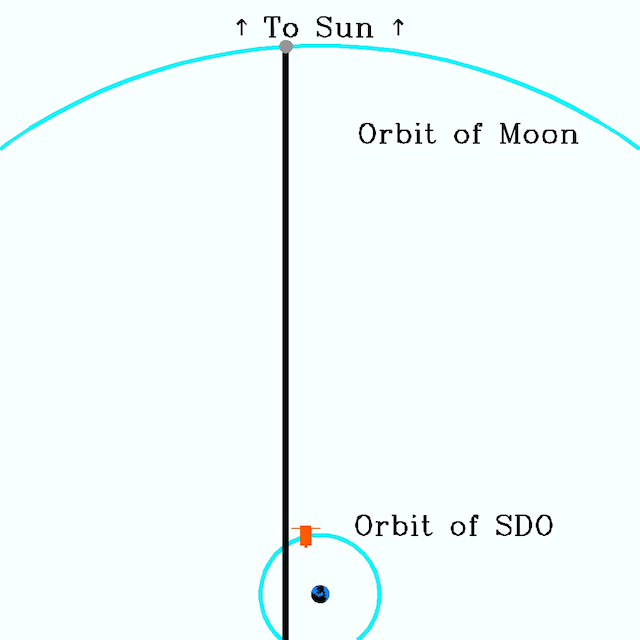Watch the Moon Yo-Yo Across the Sun in This Bizarre Video

Don't panic; the solar system isn't falling apart, despite the strange dance on display in this incredible footage captured by NASA's Solar Dynamics Observatory (SDO).
Sure, the video appears to show the moon crossing the sun's face and then doubling back, like a celestial yo-yo — but that's just a matter of perspective. The phenomenon in the video is actually caused by the relative orbits of the spacecraft and the moon around Earth.
You can play a similar visual trick with neighboring cars on a highway: Picture your car speeding up relative to a nearby vehicle, which then appears to move backward. It doesn't actually reverse, of course; it just can't keep up with your point of view.
Related: The Sun in HD in Amazing Solar Dynamics Observatory Photos
With the spacecraft, this phenomenon is about orbit size instead of speed. The SDO is orbiting much closer to Earth than the moon is. That means that every once in a while, they align just so, with the SDO briefly traveling directly perpendicular to the moon. Then, it turns in its relatively tight orbit around Earth, even as the moon, in its much more distant orbit, continues to swing across the sky.

The video doesn't show the moon doubling back across the sun, in other words — it actually shows the spacecraft's perspective doubling back in its own orbit around Earth.
On this particular occasion, the full event took a little over 4 hours on the night of March 6 to unfold. The moon blocks up to 82 percent of the sun's disk during the crossover.
Get the Space.com Newsletter
Breaking space news, the latest updates on rocket launches, skywatching events and more!
The SDO has been in geosynchronous orbit since 2010 as it studies the sun in a range of wavelengths.
- The Sun in HD: Latest Photos by NASA's Solar Dynamics Observatory
- Stunning NASA Video Shows 3 Years of the Sun in 3 Minutes
- See the Sun Flip Out in Wild New Satellite View
Email Meghan Bartels at mbartels@space.com or follow her @meghanbartels. Follow us on Twitter @Spacedotcom and on Facebook.
Join our Space Forums to keep talking space on the latest missions, night sky and more! And if you have a news tip, correction or comment, let us know at: community@space.com.

Meghan is a senior writer at Space.com and has more than five years' experience as a science journalist based in New York City. She joined Space.com in July 2018, with previous writing published in outlets including Newsweek and Audubon. Meghan earned an MA in science journalism from New York University and a BA in classics from Georgetown University, and in her free time she enjoys reading and visiting museums. Follow her on Twitter at @meghanbartels.









